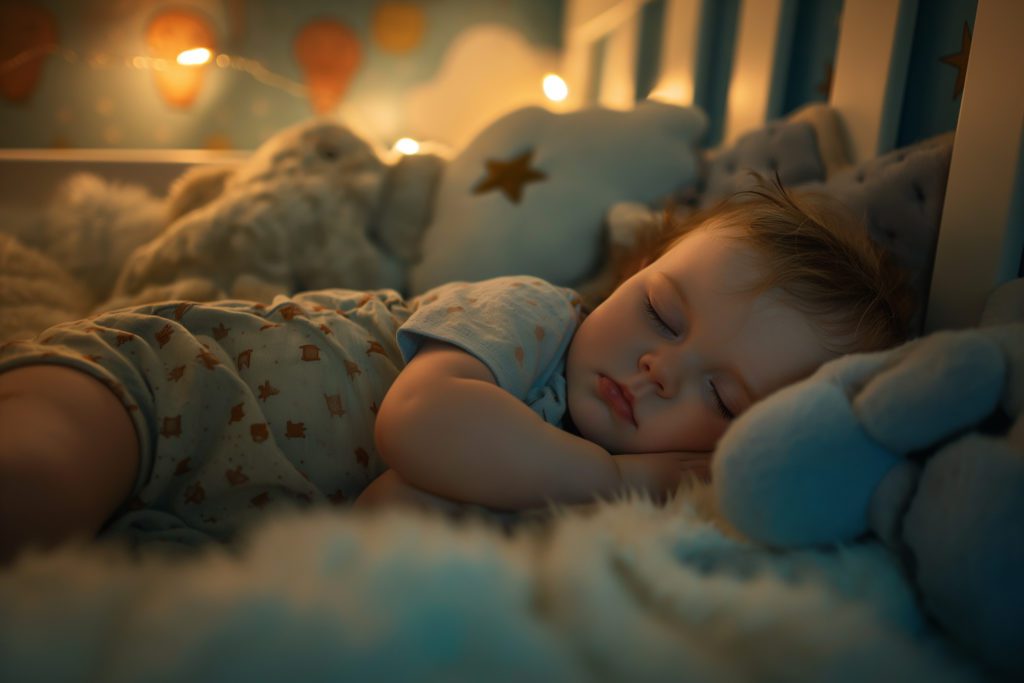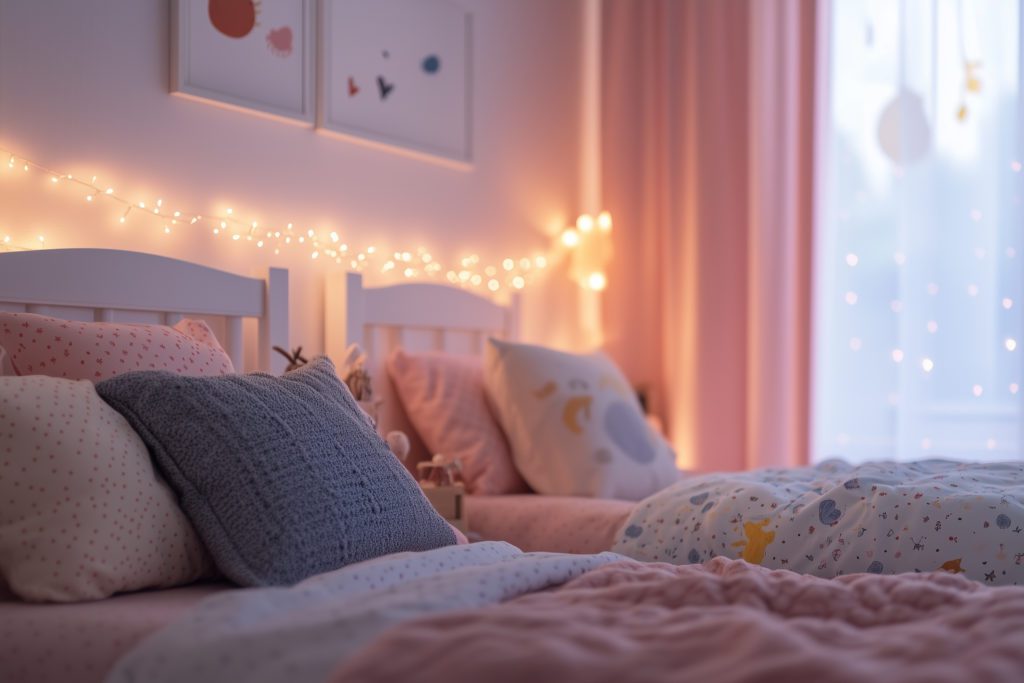
Creating a Sleep-Friendly Home: Tips for Parents and Kids
Good sleep hygiene is important for your children's health. Discover how to create a sleep-friendly environment to ease them into their bedtime routine.

Sleep hygiene is critical for children's physical and cognitive development, regardless of age. Sleep deprivation can cause many behavioral and health problems in children. Your child's surroundings in the home profoundly impact their sleep quality and duration. If your child doesn’t have an environment that is conducive to sleep, it can contribute to sleep problems.
Creating a soothing and sleep-friendly environment is an effective way to help your child drift off more easily, leading to more shut-eye for both of you. Fortunately, there are many simple, useful ways to create a sleep-friendly bedroom that’s conducive to sleep.
Clear Out the Clutter
Keeping the clutter to a minimum in your child's room is essential in creating a relaxing, sleep-friendly atmosphere. A messy bedroom can distract and make falling asleep difficult. To clear out the mess, organize your child's space and donate toys, clothing and other items they don't play with or have outgrown. Keep storage bins and tubs easily accessible for your child to reach so they can tidy up at the end of the day and help keep their room neat.
Consider Blackout Curtains
Too much light during the evening interrupts your circadian rhythm, making it more challenging for both children and adults to fall asleep. Although light, airy curtains are fashionable, they don't block light very well, especially if you live near a street light or in a well-lit area. Blackout curtains are made of tightly woven fabric and can effectively darken a room, making it easier for your kids to fall asleep.
Good Bedding Makes a Difference
A supportive mattress and comfortable bedding can make all the difference in the world when it comes to quality sleep. While babies under one should not have anything in their crib except for a firm mattress and fitted sheet, older children can get involved in choosing the bedding they enjoy most. You may even consider a weighted blanket if your child is at least preschool age. Weighted blankets can also improve your child's sleep quality, especially if they frequently have difficulty sleeping at night.
Create a Cool Environment
It is easier to fall asleep in a comfortably cool room than in a warm one. Keep your child's room at an optimally cool temperature in the evening. The ideal temperature for restorative sleep is between 60 and 67 degrees Fahrenheit. An oscillating or overhead fan may also help keep their room cool during warmer summer nights.
Mask Distractions With White Noise
Trains, dogs barking and noisy siblings can all prevent your child from a good night's sleep. If your child frequently awakens due to noise, consider investing in a white or pink noise machine. Some machines offer different options, such as peaceful nature sounds or other types of soothing ambiance. You can even download an app, Pillow, on your tablet or phone that features a variety of relaxing soundscapes to prepare your child for bedtime.
Promote Relaxation With Aromatherapy
Certain scents can help encourage relaxation and ease anxiety, which commonly occur around bedtime for children. Experiment with different aromas, such as lavender, chamomile, cedarwood, rose and sandalwood, to see which your child prefers. Scent the air of your child's room with an oil diffuser, linen spray or even through an aromatherapy stuffed animal to help your child ease into their bedtime routine.
Choose a Soothing Color Scheme
Colors can influence your behavior, which is why many fast-food restaurants use a combination of brightly colored hues to stimulate appetite and drive up business. You can apply the same principle to your child's bedroom by using a combination of colors meant to relax and soothe. Some colors you may consider using to decorate your child's room are:
- Soft pink
- Baby blue
- Lavender
- Pastel green
- Soft grays
- Buttery yellows
You can incorporate these colors into their rooms with wall art, curtains, pillows, bedding, rugs and even paint.
Choose the Right Night Light
Although sleep experts recommend sleeping in a dark room, this can be difficult for younger kids, especially if they get up to use the restroom at night. Night lights can help your child feel safe in their bedroom, which is important if they are at a transitional stage. When choosing a night light, opt for an amber-colored one, as the warm glow makes it easier for children to fall back asleep than a brightly colored night light.
Set a Consistent Bedtime
While most kids (and parents) prefer to sleep in on the weekends, doing so may actually be detrimental to sleep hygiene. Children who go to bed at the same time every day are more likely to take less time falling asleep, sleep longer and wake up less frequently at night. Plus, consistency can contribute to positive developmental outcomes and better school performance.
Create the Perfect Bedtime Routine
Creating a consistent routine before bed is one of the most effective ways to ease children into bedtime. This routine should be done about 30 minutes to one hour before bedtime and consist of a few activities done in the same order every evening to prepare them for sleep. Some activities to incorporate into your child's bedtime routine can include:
- Listening to calming music
- Setting a white noise machine
- Getting a gentle massage
- Reading a bedtime story
- Brushing their teeth
- Having a warm bath
- Singing a lullaby
- Talking about their day
- Enjoying a healthy bedtime snack
Although eating a large meal before bedtime isn't a good idea, a light snack may settle your child's tummy and promote sleep. Bananas, almonds and warm milk are all good snack options to consider.
Establishing a good bedtime routine is important for sleep hygiene. As your child gets older, encourage them to actively participate in the process by tidying up and brushing their teeth before bed. By promoting good sleep habits while they're young, you can set them up with a good foundation for the future.

Written by
Emily Mendez
Emily Mendez is a former therapist and mental health author. She is one of the leading voices in mental health. Emily's writing has appeared in eCounseling, SonderMind, and more. Emily is frequently interviewed by Healthline, Fatherly, INSIDER, Family Circle, and other national media for her advice and expert opinion on the latest mental health topics.
Download Pillow
Get help
Press & News
Legal
Connect
X (Twitter)
Company
Copyright © Neybox Digital Ltd.



